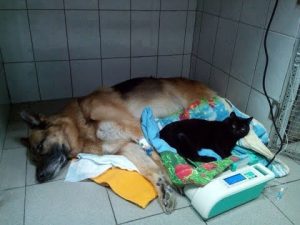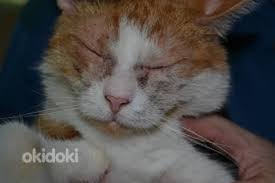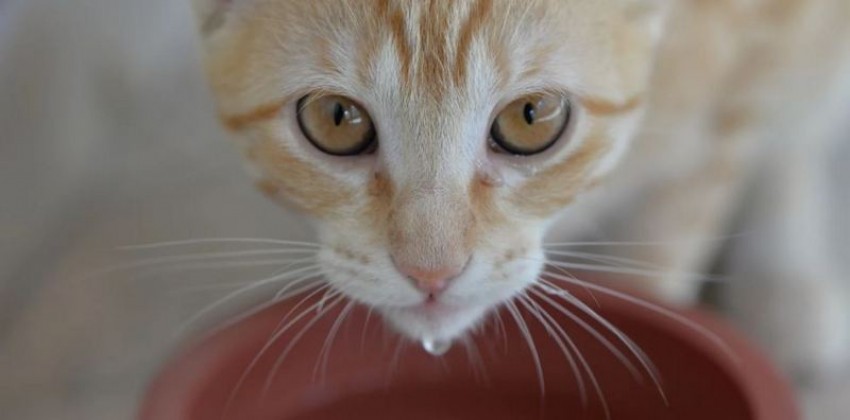Hypertrophic Cardiomyopathy – HCM
 As I have already noted in other articles – unfortunately, dangerous heart diseases do not bypass our pets.
As I have already noted in other articles – unfortunately, dangerous heart diseases do not bypass our pets.
There are a number of diseases that have a negative effect on the cat’s heart, which can be caused by damage to the heart valves, heart shirts, blood vessels, etc. A number of such diseases lead to the development of cardiovascular failure – a clinical syndrome in which the minute volume of the heart does not ensures the normal functioning of the body as a whole. For example, in cats, hypertrophic cardiomyopathy, commonly known by the acronym HCM, is common. The disease is expressed in the thickening of the heart muscle and further leads to heart failure. Differs in complexity of treatment and can lead to a lethal outcome.
Also, the presence of this disease adversely affects the treatment of other diseases of the animal, it is critical to assess the possibility of surgical intervention.
Predisposition to hypertrophic cardiomyopathy
Marked hereditary tendency to this disease. The most popular breeds of today are predisposed, for example: British Shorthair, Sphynx, Scottish Fold, American Shorthair, Maine Coon, etc.
In recent years, specialized tests for the presence of susceptibility to this disease have spread in the world veterinary practice.
Features and danger of disease
Hypertrophic cardiomyopathy is expressed in the fact that thickening of the heart muscle leads to a high frequency of heart rhythm disturbances (ventricular extrasystoles and paroxysmal tachycardia) and disturbance of the diastolic filling of the left ventricle. As a result, the constantly pumped blood volume decreases, stagnation appears and, as a result, the left atrium and pulmonary veins increase, which is likely to lead to pulmonary edema.
Hypertrophic cardiomyopathy – symptoms
Unfortunately, at an early stage it is extremely difficult to independently detect signs of the disease. Only a very observant owner will notice slight shortness of breath and signs of more rapid fatigue. But the following symptoms may clearly be observed:
anorexia;
no desire to move;
vomiting;
dyspnea;
rapid breathing;
thrombosis of blood vessels, as a result – paresis of the hind, and sometimes the front limbs;
fainting;
Such a complication of hypertrophic cardiomyopathy as thromboembolism is widespread. Blood stasis causes the formation of blood clots, which has its sad consequences. In particular, vascular occlusion, hind limb paralysis, pain and death. The disease is extremely dangerous and can not be self-cured – the chances of saving the animal are only in a modern, well-equipped clinic.
Diagnosis of hypertrophic cardiomyopathy
As you already understood, the most important focus in the fight against this disease should be done on the diagnosis – detection and definition of the disease, because the sooner the therapy is carried out – the more chances to save the animal.
Today, the best way to diagnose hypertrophic cardiomyopathy is ECHO-cardiography – ultrasound of the heart. Sometimes additional research should be done.
In order to successfully diagnose hypertrophic cardiomyopathy in a clinic, the following conditions must be met:
• a qualified cardiologist;
• availability of a specialized cardiological ultrasound machine of expert class General Electric.
Not every clinic in the Republic of Belarus has such equipment. Fortunately, our VetProfi clinic has everything you need to diagnose and treat this serious disease.
!IMPORTANT. Again I want to draw the attention of the owners that veterinarians consider it necessary to conduct this study in the case of preparation for any operation carried out under general anesthesia. Most of the complications during operations (including pulmonary edema and death) are caused precisely by the presence of HCM.
Treatment of hypertrophic cardiomyopathy
I want to calm the owners of animals a little. Today, hypertrophic cardiomyopathy does not mean a death sentence for your pet. With proper therapy, the animal can live a long and high-quality life, despite this terrible diagnosis. The main goal of treatment is to increase the filling of the ventricles, eliminate blood stasis, control arrhythmia and prevent the formation of blood clots. It is important that the animal with the detected HCM was provided with the maximum possible rest. Of the drugs, drugs such as beta-blockers are commonly used, drugs for the prevention of thromboembolism, ACE inhibitors, calcium channel blockers, etc. are additionally prescribed. But do not try to treat the animal yourself, specific treatment is prescribed only by a veterinarian of the appropriate (cardiological) specialization.
As in the case of other diseases, the prescription of maintenance therapy is most effective at an early stage, so it is extremely important to diagnose and detect the disease as early as possible.
IMPORTANT! Animals with a confirmed diagnosis of hypertrophic cardiomyopathy should be excluded from breeding.



